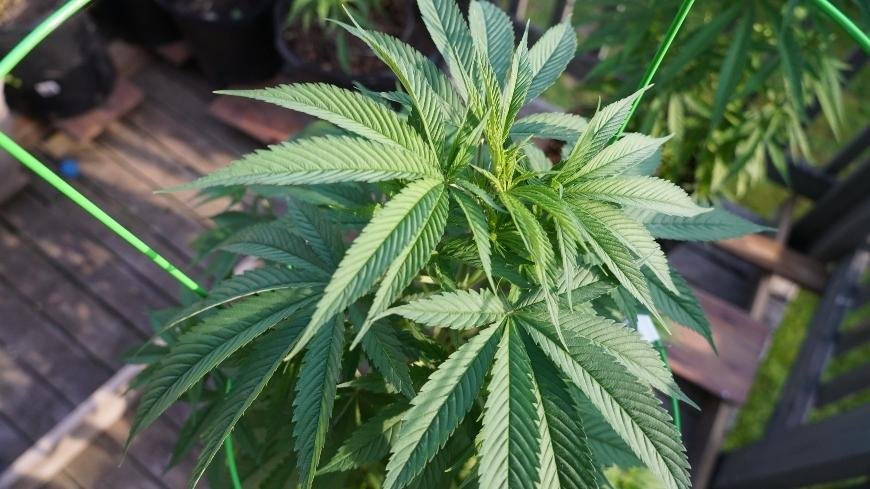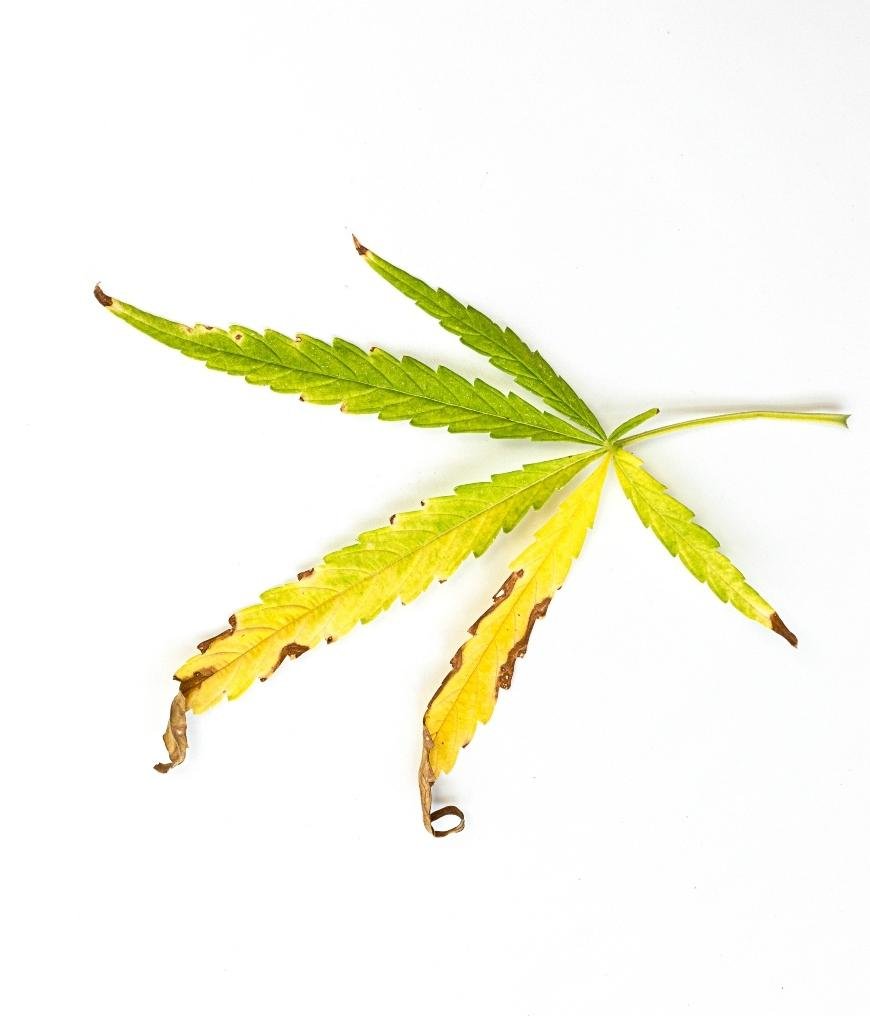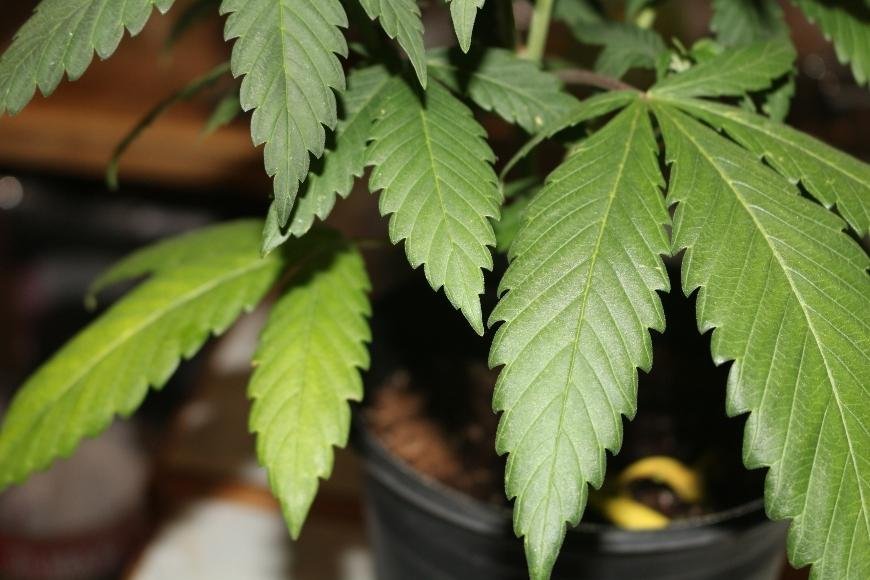How to Fix Iron Deficiency in Cannabis Plants
Learn how to fix iron deficiency in cannabis plants: identification, causes, prevention, treatment, and essential nutrient tips for a thriving garden.

Understanding how to fix iron deficiency in cannabis plants is crucial for any grower looking to maintain a healthy and thriving garden. Without adequate iron, cannabis plants can experience a range of issues such as chlorosis, stunted growth, and reduced yields. In this blog post, we will delve into identifying the signs of iron deficiency in your marijuana plants and explore its potential causes.
Furthermore, we will discuss preventive measures that can be taken to avoid such nutrient problems from occurring in your cannabis garden. We'll also provide guidance on treating existing iron deficiencies by applying chelated iron treatment and ensuring optimal environmental conditions for your growing cannabis plants.
In addition to learning how to fix iron deficiency in cannabis plants, you'll gain valuable insights into maintaining overall plant health by monitoring essential mineral levels and minimizing stress factors that could contribute to nutrient lockout or other complications.
Table of Contents:
- Identifying Iron Deficiency in Cannabis Plants
- Chlorosis in Young Leaves
- Stunted Growth Patterns
- Reduced Crop Yields
- Causes of Iron Deficiency in Cannabis Plants
- Preventative Measures for Iron Deficiency
- Treating Existing Iron Deficiencies Effectively
- Supplementing Cannabis Plants with Essential Nutrients
- Frequently Asked Questions How to Fix Iron Deficiency in Cannabis Plants
- Conclusion
Identifying Iron Deficiency in Cannabis Plants
Recognizing the symptoms of iron deficiency is crucial for maintaining healthy cannabis plants. Yellowing leaves, stunted growth, and reduced yields are common signs of an iron shortage. Understanding these indicators can help you address the issue promptly and effectively.
Chlorosis in Young Leaves
The first sign of cannabis iron deficiency often appears as chlorosis or yellowing between the veins on young leaves. This occurs because iron plays a vital role in chlorophyll production, which gives leaves their green color. When there's not enough available iron, new growth may appear pale green to yellow while older leaves remain unaffected initially. If left untreated, this discoloration will eventually spread throughout the plant's foliage leading to more severe nutrient problems down the line.
Stunted Growth Patterns
In addition to leaf discoloration, another symptom of cannabis-specific nutrients, such as magnesium deficiencies or excess nutrients like phosphorus could also cause similar issues with your marijuana plants' appearance & overall health thus making it essential always monitor closely any changes within growing environment.
Growth Tips:
- Ensure optimal pH levels
- Avoid overwatering or underwatering your cannabis garden
- Maintain proper humidity and temperature conditions
- Monitor for potential nutrient lockout due to imbalances
Reduced Crop Yields
Regularly monitor signs of iron deficiency in your cannabis plants to avoid reduced crop yields due to decreased energy production. As the yellow leaves lose their ability to photosynthesize effectively, energy production decreases which ultimately affects the plant's growth rate & development leading towards lower yields come harvest time.
To prevent these issues from affecting your marijuana plants, it's essential to monitor for signs of cannabis iron deficiency regularly and take action when needed. In the following sections, we'll discuss potential causes behind this nutrient problem as well as preventative measures you can implement in order to maintain optimal growing conditions within your cannabis garden.

Causes of Iron Deficiency in Cannabis Plants
Various factors contribute to iron deficiency in cannabis plants, such as pH imbalances, overwatering, excessive nutrients or water usage, and root problems caused by poor drainage or fungal growths. Knowing these causes helps growers prevent nutrient deficiencies and optimize plant health.
Soil pH Imbalances Hindering Nutrient Absorption
An improper soil pH level can lead to a range of nutrient problems for your cannabis garden. When the pH is too high or low, it can impede roots from taking in essential minerals such as iron. For optimal absorption of iron and other nutrients, maintain a soil pH between 6.5 - 6.7 for growing cannabis plants.
Overwatering Leading to Anaerobic Conditions
Overwatering marijuana plants can cause anaerobic conditions within the root zone due to insufficient oxygen supply which leads to yellow leaves and stunted growth patterns often associated with an iron deficiency . To avoid this issue ensure proper drainage systems are implemented while monitoring watering frequency based on individual plant needs & environmental conditions present at any given time during cultivation process.
Excessive Use of Filtered or Reverse Osmosis (RO) Water
- Filtration:
- The use of filtered water may remove beneficial minerals such as calcium, magnesium & trace amounts needed including those found naturally occurring within tap sources potentially leading to nutrient deficiencies within your cannabis plants.
- Reverse Osmosis:
- While reverse osmosis (RO) water is an excellent choice for eliminating contaminants, it also strips away essential minerals like iron. If you're using RO water, be sure to supplement with a balanced nutrient solution containing all the necessary elements for healthy plant growth.
In addition to these primary causes of iron deficiency in cannabis plants, growers should also be aware of potential root problems caused by poor drainage or fungal growths which can further exacerbate issues related to overall health & development throughout various stages during cultivation process ensuring optimal yields are achieved consistently across each harvest cycle moving forward together as one cohesive unit working towards success.
Preventative Measures for Iron Deficiency
To avoid iron deficiency issues with your cannabis plants, it's essential to proactively implement strategies that promote optimal plant health. By monitoring soil pH levels, incorporating compost into the growing medium, ensuring proper drainage and avoiding overwatering, you can prevent nutrient deficiencies and maintain a thriving cannabis garden.
Monitoring Soil pH Levels Between 6.5 - 6.7
Maintaining the correct soil pH levels is crucial for preventing iron deficiency in cannabis plants. When the pH level is too high or too low, it hinders nutrient absorption and leads to various nutrient problems like iron lockout. Aim to keep your soil's pH between 6.5-6.7 by using a reliable pH meter. Regularly check and adjust as needed to ensure your marijuana plants have access to all necessary nutrients.
Incorporating Compost Into The Growing Medium
- Add organic matter: Adding well-aged compost or other organic matter into your growing medium can help increase its natural supply of essential nutrients like iron while also improving overall soil structure.
- Promote beneficial microorganisms: Organic materials such as compost encourage the growth of beneficial microorganisms which aid in breaking down complex compounds making them more available for uptake by roots system within our cannabis garden.
- Better water retention: A healthy mix of organic matter will also improve water retention capacity within mediums allowing better availability during dry periods when plants may be more prone to nutrient deficiencies.
Ensuring Good Drainage and Avoiding Overwatering
Proper drainage is essential for preventing iron deficiency due to anaerobic conditions caused by overwatering. Excess H2O can cause root decay, leading to difficulty in absorbing vital nutrients such as iron. To avoid these issues:
- Use well-draining soil: Choose a high-quality growing medium with good drainage properties or create your own mix using ingredients such as perlite, coco coir, or vermiculite.
- Avoid compacted soil: Compacted soil restricts oxygen flow and hinders proper root development. Regularly aerate your cannabis garden by gently loosening the top layer of soil without damaging roots system within our plants.
- Maintain a watering schedule: Establish a consistent watering routine based on your specific cannabis strain needs & environmental factors present within grow space ensuring not too much nor too little moisture available at any given time throughout lifecycle stages from seedling till harvest period arrives.
Monitoring soil pH and incorporating compost can help prevent future iron deficiency issues. Now let's look at how we can treat existing iron deficiencies effectively.
Treating Existing Iron Deficiencies Effectively
Iron deficiency in cannabis plants is a major issue, but fortunately it can be addressed with effective treatments. By applying chelated iron and addressing other mineral imbalances, you can restore your plant's health and prevent further nutrient problems.
Chelated Iron Application for Quick Absorption by Roots & Foliage Alike
The most effective treatment for iron deficiency is the application of chelated iron. Chelates are organic molecules that bind with metal ions like iron, making them more soluble and available to plants. You can add chelated iron directly into the soil mix or nutrient solution to ensure quick absorption by both roots and foliage. This will help your cannabis plants recover from the effects of an iron shortage rapidly.
Correct Mineral Imbalances within Copper, Magnesium & Calcium Concentrations
In addition to adding chelated iron, it's essential to check other mineral levels in your growing medium as well. Imbalances in copper, magnesium, and calcium concentrations often contribute to or exacerbate existing nutrient deficiencies, including those related to iron availability. Ensuring these minerals are present at optimal ratios will help resolve any lingering issues with your plant's growth.
- Copper: Crucial for photosynthesis and overall plant health; ideal concentration ranges between 0.1 - 0.5 ppm (parts per million).
- Magnesium: Necessary for chlorophyll production and energy transfer within the plant; ideal concentration ranges between 25 - 50 ppm.
- Calcium: Important for cell wall structure, root development, and nutrient uptake; ideal concentration ranges between 150 - 200 ppm.
Flush System with pH-Balanced Water to Remove Excess Salts
If your cannabis plants have been exposed to excess nutrients or strong fertilizers, it's crucial to flush the system with pH-balanced water. This will help remove any built-up salts that can cause nutrient lockout and hinder iron absorption. By flushing your growing medium thoroughly, you'll ensure better availability of essential nutrients moving forward.
Incorporating these treatment methods into your cannabis garden maintenance routine will help you effectively address existing iron deficiencies in your plants while preventing future issues from arising. Remember always to monitor soil pH levels closely and adjust as needed for optimal nutrient uptake by marijuana plants.

Supplementing Cannabis Plants with Essential Nutrients
Supplying your cannabis garden with the essential nutrients it needs to flourish is a must for keeping it healthy. One way to ensure that your plants receive these vital elements is by using supplements like Cal-Mag, which contains iron and can help prevent nutrient lockout when used alongside soft-water sources prone to causing mineral imbalances. Additionally, maintaining optimal environmental conditions through temperature management is crucial for supporting overall plant health.
Utilizing Cal-Mag Supplements for Balanced Nutrition
Cal-Mag supplements are specifically designed to provide cannabis plants with balanced nutrition, including calcium, magnesium, and iron. These three minerals work together synergistically in the plant's growth process and play an essential role in preventing various nutrient deficiencies such as yellow leaves or stunted growth patterns:
- Calcium: Strengthens cell walls and promotes root development.
- Magnesium: Helps produce chlorophyll and aids in photosynthesis.
- Iron: Assists in oxygen transportation throughout the plant while contributing to chlorophyll formation.
To effectively use Cal-Mag supplements, follow the manufacturer's recommended dosage instructions on the product label. Typically, you'll want to add it into your regular feeding schedule every two weeks during both vegetative growth stages as well as flowering periods of marijuana plants life cycle ensuring optimal uptake without risk over-fertilization issues commonly seen from strong fertilizers usage within inexperienced growers alike.
Ensuring Optimal Environmental Conditions Through Temperature Management
A stable environment plays a significant role in preventing nutrient problems, including iron deficiency in cannabis plants. By maintaining optimal temperature levels within your grow tent or growing space, you can minimize stress on the plants and support their overall health.
Ideal temperatures for growing cannabis vary depending on the stage of growth:
- Vegetative Stage: Keep temperatures between 70-85°F (21-29°C) during daytime hours with a slight drop at night to encourage strong vegetative growth.
- Flowering Stage: Maintain daytime temperatures between 65-80°F (18-26°C), allowing for cooler nights to help promote bud development and prevent heat stress that could lead to reduced yields or other issues like excess nutrients buildup causing potential lockout scenarios.
To maintain stable temperature levels, consider using equipment such as grow tent heaters or electric blankets during colder months while utilizing proper ventilation systems throughout warmer periods ensuring consistent environmental conditions year-round promoting healthy plant's growth patterns without risk of encountering nutrient deficiencies due improper climate management practices often seen among novice growers alike.
Frequently Asked Questions How to Fix Iron Deficiency in Cannabis Plants
What are the symptoms of iron deficiency in cannabis plants?
The yellowing typically starts at the leaf tips and spreads towards the base, while veins remain green.
How can I identify an iron deficiency in my cannabis plants?
To identify an iron deficiency, look for chlorosis in young leaves along with stunted growth. If these symptoms are present alongside a soil pH imbalance or excessive use of filtered water, it's likely that your plant has an iron deficiency.
What causes iron deficiencies in cannabis plants?
Causes of iron deficiencies include soil pH imbalances hindering nutrient absorption, overwatering leading to anaerobic conditions, and excessive use of filtered or reverse osmosis (RO) water which lacks essential minerals.
How do I fix an iron deficiency in my cannabis plants?
To fix an existing iron deficiency, apply chelated Iron for quick absorption by roots & foliage alike. Correct mineral imbalances within Copper, Magnesium & Calcium concentrations and flush system with pH-balanced water to remove excess salts.
Are there any natural remedies for fixing iron deficiencies in cannabis plants?
Natural remedies include incorporating compost into the growing medium as it contains organic matter rich in nutrients like Iron. Additionally, ensure good drainage to avoid overwatering and maintain optimal environmental conditions through temperature management.
Conclusion
Iron deficiency is a common problem in cannabis plants that can lead to stunted growth and reduced yields. Symptoms include yellowing leaves with green veins, slow growth, and leaf drop. Causes include improper pH levels, overwatering, and poor soil quality. To treat iron deficiency, growers can apply chelated iron or adjust the pH levels of their soil. Preventative measures include regular soil testing and nutrient analysis, proper watering practices, and balanced nutrient solutions.


























































































































